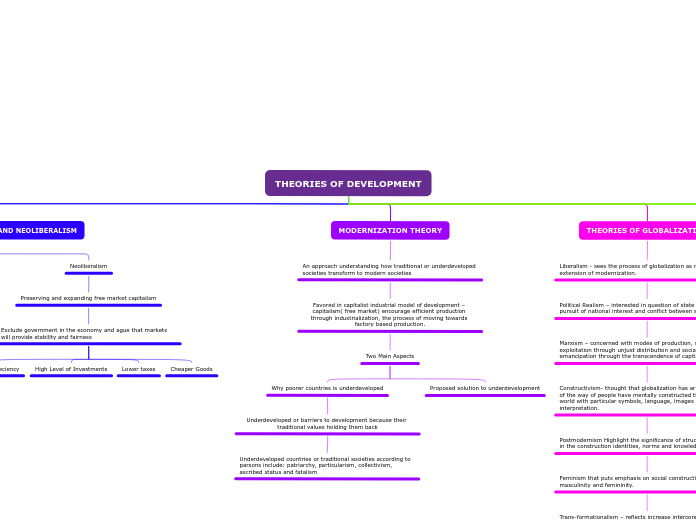
Classical Economics
Value of commodity or service is determined by its manufacturing cost.
The production element which includes labour, capital, land, and entrepreneurship that determines the cost of production.
Neoclassical Economic
Emphasizes supply and demand as the primary forces that drive the production, price and consumption of commodities and services.
Keynesian Economic
A macroeconomic theory of total spending in the economy and its effect output, employment and inflation.
Both state and private sector has a reciprocal relationship
Demand side economy- that focuses in changes in the economy over the short run
Consumer demand is the primary driving force in the economy.
Economic gain and maintaining economic growth
Neoliberalism
Preserving and expanding free market capitalism
Exclude government in the economy and ague that markets will provide stability and fairness
Economic effeciency
High Level of Investments
Lower taxes
Cheaper Goods
An approach understanding how traditional or underdeveloped societies transform to modern societies
Favored in capitalist industrial model of development – capitalism( free market) encourage efficient production through industrialization, the process of moving towards factory based production.
Two Main Aspects
Why poorer countries is underdeveloped
Underdeveloped or barriers to development because their traditional values holding them back
Underdeveloped countries or traditional societies according to parsons include: patriarchy, particularism, collectivism, ascribed status and fatalism
Proposed solution to underdevelopment
Liberalism - sees the process of globalization as market led extension of modernization.
Political Realism – interested in question of state power, the pursuit of national interest and conflict between states.
Marxism – concerned with modes of production, social exploitation through unjust distribution and social emancipation through the transcendence of capitalism.
Constructivism- thought that globalization has arisen because of the way of people have mentally constructed the social world with particular symbols, language, images and interpretation.
Postmodernism Highlight the significance of structural power in the construction identities, norms and knowledge.
Feminism that puts emphasis on social construction of masculinity and femininity.
Trans-formationalism – reflects increase interconnectedness In political economic and cultural matters across the world creating a shared social space.
Eclecticism- put emphasis on technology and institution building, national interest and inter-state competition, capital accumulation and class struggle, identity and knowledge construction, rationalism and cultural imperialism and masculinize and subordination of women.
Three main characteristics of dependency theory : (1) The international system is seen as the um of two sets of states: dominant and dependent (2) Dependency theory holds that external forces are critical in terms of economic activity of dependent states (3) relationship, based on strongly historical patterns and dynamics.
Holds expected outcomes for peripheral countries: a) economically – the outcome of development is continued underdevelopment b) socially- the outcome is inequality and conflict c) politically the outcome is the reinforcement of authoritarian government.
4 different functions of states in the world economy 1. Center of the Center (CC) consists of the United States, the United Kingdom and France 2. Periphery of the Center (PC) includes advanced and industrialized countries 3. Center of the Periphery (CP) countries have a reasonable amount of wealth despite the fact that they are still undergoing processes of development 4. Periphery of the Periphery (PP) the poorest countries of the world and are the least advanced countries
Divided the countries into three categories: (1) Core Countries- are dominant capitalist countries characterized by high levels of industrialization and urbanization. (2) Semi-Peripheral countries – less developed than core nations but more developed than peripheral nations. (3) PeriPheral Countries – generally provide labor and materials to core countries.
Strengths: a.) Theory explains internal inequalities. b.) It is human centric rather than system-centric.
Criticisms a.) too much emphasis on economics and capitalism b.) insufficient grounding in empirical data c.)ignores socio-cultural causes of underdevelopment
An analysis of the social and cultural features of late capitalism (post-modernity), a critique sociological theory as a modernist project, and an extension of sociological inquiry into new domains.
Increasing impact of globalization or interconnectedness of society due in part, to the development of modern telecommunication networks.
Our subjective experience of everyday life and our sense oF identity has somehow changed significantly in recent years.
The view that capitalist or industrial societies have reached new and important stages in their development, the shift from modernity to post-modernity.
Greater Pluralism
People less likely to follow to follow rigid ideology.